- Home
- Shannon Messenger
Unlocked 8.5 (Keeper of the Lost Cities) Page 14
Unlocked 8.5 (Keeper of the Lost Cities) Read online
Page 14
Portraits
AUTHOR’S NOTE
WHEN MY PUBLISHER APPROVED MY plan for including a series guide in this book, my first question was, CAN WE HAVE ILLUSTRATIONS? And I happy-danced around my house when the answer was, Absolutely!
But then I was left with the NEARLY IMPOSSIBLE task of deciding which pieces to include.
(When it comes to Keeper art, imagine me like Silveny: MORE! MORE! MORE! )
In the end, I picked characters, locations, and moments we haven’t gotten to see yet—and it all turned out so much more amazing than I ever could’ve hoped!
And so, without further ado, I present a selection of awesome Keeper portraits, and they are as follows:
A PORTRAIT OF SANDOR AND GRIZEL
(standing outside of Everglen)
A PORTRAIT OF BO AND RO
(standing outside of Candleshade)
A PORTRAIT OF FLORI
(under Calla’s Panakes tree)
THE TWELVE ORIGINAL COUNCILLORS
(seated on their thrones in Tribunal Hall)
A PORTRAIT OF SOPHIE WITH HER HUMAN FAMILY
(in San Diego, from before Sophie moved to the Lost Cities)
A PORTRAIT OF WYLIE WITH HIS PARENTS
(happy together, before tragedy struck their family)
A PORTRAIT OF TAM AND LINH WITH THEIR PARENTS
(standing in front of Choralmere, from before they were banished)
A PORTRAIT OF ELWIN AND LIVVY
(with Bullhorn!)
A PORTRAIT OF THE BLACK SWAN’S COLLECTIVE
(standing in Alluveterre)
Art by Laura Hollingsworth
Life in the Lost Cities
AUTHOR’S NOTE
ONE OF THE MOST FASCINATING (and challenging!) parts of my job for this series was creating the world of the Lost Cities. In fact, I spent more than a year brainstorming the elves’ history and culture—and then discovered how much I still had to figure out once I actually started writing the first draft.
I knew the elvin world needed to feel familiar in certain ways, since it shares our planet. But it also needed to feel wholly different, since it was built and inhabited by a totally separate species (a species that cut itself off from human contact, no less). Most important, it couldn’t just be a place where I threw together a bunch of stuff I loved. I had to follow the logic of each decision—even if it meant that certain things weren’t necessarily the way I would want them to be if I lived there.
Which is why the Lost Cities are luminous, and vibrant, and filled with places and foods and creatures and gadgets I wish existed—but they also aren’t perfect.
In fact, I’ve always thought of the elvin world as a “Crumbling Utopia”—a place that seems idyllic at first, but the longer you linger, the more you start to see the flaws in the system.
Those flaws are where the story comes from. After all, if the Lost Cities were perfect, they wouldn’t need Sophie Foster! (Or Keefe! Or Fitz! Or Biana! Or Dex! Or Tam! Or Linh! Or Wylie! Or! Or! Or! It takes a lot of characters to bring about change!)
So, don’t be surprised if you catch yourself thinking, That’s so cool! AND Wait—that doesn’t sound fair! as you read through this section (or the series itself). The Lost Cities are amazing in many ways. But not in all ways. At least not right now—we’ll see what happens once Sophie and crew are done saving the world.
(And don’t forget to keep an eye out for new details as you continue reading. You also might find that sometimes your favorite characters are the ones explaining things, since they do it way better than I can!)
The Council
THE LOST CITIES ARE GOVERNED by a Council—and while the Council’s authority technically only applies to elves, its role in negotiating and enforcing treaties with the other intelligent species causes the elves to see the Councillors as rulers over all. Members of the Council accept their positions not for privilege or honor or glory, but rather from a sense of obligation stemming from the fact that they believe they’re uniquely qualified to lead.
In Ancient times, the Council had three members. But as the population of the Lost Cities has grown, so has the number of Councillors. Currently the Council is a group of twelve. And given the vital role they play, the Councillors have each been assigned a goblin bodyguard for their protection. (Other security measures have been recently added and are kept highly classified.)
Each Councillor has the same level of authority—though they choose a “spokesperson” from among their ranks (always a Telepath who can mentally moderate their discussions before voicing the consensus) in order to ensure that the Council publicly presents a united front. And while many decisions require a unanimous vote, some only need a majority. In cases where dissent exists, the outvoted Councillors are expected to resist further argument or disruption (though Councillor Bronte notoriously struggles with that edict).
Elections are infrequent, only occurring when a Councillor either dies or chooses to resign—or in rare cases (like what happened with Fintan and the ban on pyrokinesis) when a Councillor finds themselves no longer qualified for the position. The most common reason for resignation is a desire for a family. Councillors aren’t allowed to marry or have children while serving (strong family connections could bias their decisions), and some eventually grow weary of the restriction. When a new Councillor is elected, the public first submits nominations from various members of the nobility who qualify for consideration. The remaining Councillors then vote among themselves to determine who will join their ranks, using a network of mirrors. When all the mirrors are aligned (and the vote is therefore unanimous), a beam of light refracts off their castles, bright enough to be seen anywhere in the Lost Cities.
The Councillors wear extravagant gowns and jerkins, highly embellished capes, and jewel-encrusted circlets decorated with their choice of gemstone. Their circlet jewel also adorns their throne in Tribunal Hall. At times, the Councillors need to appear more unified, and in those instances, they’ll wear silver cloaks and matching circlets, pull their hair back, and often keep their hoods raised, making it difficult to tell them apart. When they make their annual visit to the Point of Purity (to remind themselves where true power lies), they wear special cloak clasps shaped like glowing golden keys (which give them access to the Paragon—their transport for the journey—as well as prevent motion sickness and vertigo).
All current—and previous—Councillors also possess a small crystal gadget called a cache, which is designed to store Forgotten Secrets (information deemed too disturbing or dangerous for the Councillors to keep in their memories). Each cache contains a different number of secrets, and only the possessor of the cache is able to access theirs (using a process that’s kept highly classified).
Recent events involving the Neverseen have cast uncertainty on the strength of the Council’s power and their right to rule—as well as the appropriateness of certain past and present decisions. And while many—including certain Councillors—have come to agree that changes must be made, it’s vital for the safety and survival of the Lost Cities that the Council’s authority remain supreme. Therefore, every effort must be made to halt this rebellion before the world dissolves into war and chaos.
Currently Ruling Councillors
Despite numerous attempts, Councillor Alina has yet to approve an official portrait. According to her, “none have captured my beauty properly.”
Councillor Alina
ABILITY: Beguiler
JEWEL: Peridot
NOTE: Before being elected, Councillor Alina was the principal of Foxfire. She also dated Alden Vacker and rather notoriously tried to break up his wedding after their relationship ended.
STANCE: Despite seeming supportive when she was Sophie’s principal, Alina has openly sided against Sophie numerous times.
Councillor Bronte
ABILITY: Inflictor
JEWEL: Onyx
NOTE: As one of the only known Inflictors, Councillor Bronte additionally serves as a Mentor
to Sophie Foster. He’s also the only Ancient member of the Council.
STANCE: Bronte used to be one of Sophie’s worst adversaries, but he’s slowly become one of her most committed supporters.
Councillor Clarette
ABILITIES: Polyglot, Flasher
JEWEL: Turquoise
NOTE: Councillor Clarette is the most powerful Polyglot in the Lost Cities and can even vaguely speak to animals—which often makes people forget that she (like most Polyglots) has a second special ability.
STANCE: Clarette has never voiced support for Sophie and tends to defer to whatever the majority of the Council decides.
Councillor Darek
ABILITY: Phaser
JEWEL: Ruby
NOTE: Councillor Darek was found to have the most powerful telekinesis out of everyone on the Council.
STANCE: Darek has never openly sided with Sophie and has likely voted against her.
Councillor Emery
ABILITY: Telepath
JEWEL: Sapphire
NOTE: Councillor Emery is the spokesperson for the Council.
STANCE: Emery vacillates between siding with Sophie and siding against her.
Councillor Liora
ABILITY: Conjurer
JEWEL: Pearl
NOTE: Councillor Liora is the second longest–serving Councillor—second only to Councillor Bronte (though she’s still several centuries away from becoming one of the Ancients).
STANCE: Liora has never spoken in support of Sophie and has likely sided against her.
Councillor Noland
ABILITY: Vociferator
JEWEL: Tanzanite
NOTE: Councillor Noland often holds back from speaking (unless necessary) because of the power carried in his voice.
STANCE: Noland has never proven to be an ally to Sophie and has surely voted against her.
Councillor Oralie
ABILITY: Empath
JEWEL: Pink tourmaline
NOTE: Rumors used to connect Councillor Oralie romantically to Councillor Kenric (before he died)—but no proof of impropriety has ever been found.
STANCE: Oralie has always loyally sided with Sophie.
Councillor Ramira
ABILITY: Vanisher
JEWEL: Diamond
NOTE: Councillor Ramira’s cache contains more Forgotten Secrets than any of the other Councillors’.
STANCE: Ramira has never expressed support for Sophie and likely defers to the majority of the Council.
Councillor Terik
ABILITY: Descryer
JEWEL: Emerald
NOTE: Councillor Terik is the only known Descryer. During the fall of Lumenaria, he lost the lower portion of his left leg and now walks with a prosthetic and a cane.
STANCE: Terik has consistently supported Sophie.
Councillor Velia
ABILITY: Guster
JEWEL: Amethyst
NOTE: Councillor Velia is an expert on maps.
STANCE: Velia has yet to show support for Sophie and has surely voted against her.
Councillor Zarina
ABILITY: Charger
JEWEL: Opal
NOTE: Not long after her election, Councillor Zarina considered resignation. None except her fellow Councillors know why.
STANCE: Zarina has never shown herself an ally to Sophie and has likely voted against her.
IN MEMORY OF
Councillor Kenric Elgar Fathdon
ABILITY: Telepath
JEWEL: Amber
NOTE: Councillor Kenric was killed at Oblivimyre during the mental healing of former Councillor Fintan, when Fintan used his newly recovered strength to call down Everblaze in order to escape before his memories could be recovered. Kenric died a hero, reportedly helping spare Sophie Foster, Fitz Vacker, and Councillor Oralie from the inferno, which consumed the tower—as well as nearly half of Eternalia—before it was extinguished. A planting was held, and Kenric’s Wanderling grows bravely and boldly in the Wanderling Woods. His loss is further commemorated with a special memorial fountain in Eternalia.
BASIC ELVIN CULTURE
A WORLD OF ILLUMINATION:
Light is the foundation of the elvin world, shaping every aspect of their culture (especially their use of crystal in their architecture, gadgets, and fashion), since it’s what keeps the Lost Cities connected and allows them to remain hidden. The elves—particularly those who manifest as Shades—also utilize the power of darkness. But their true strength comes from light, whether it’s the unlimited might of the Prime Sources (sunlight, moonlight, and starlight) or the faint glow of bioluminescence in deep, shadowy places. Similarly, knowledge—and wisdom—are of vital importance to the elves, and the emphasis on study doesn’t end when they finish their schooling. Growth and learning are meant to be a focus for the entirety of their lives, as is striving to improve.
A FRAGILE PSYCHE:
Elves are remarkably intelligent and intensely emotional—two traits that give them tremendous power and a higher capacity for understanding. But they also face limitations as a result, one of which is their total aversion to any kind of violence. If an elf causes someone harm—or even witnesses it—the violence can shatter their sanity and leave them either unstable or completely unable to function. As a result, the elves have no army or police and rely instead on their treaties and their intellect to avoid conflicts before those conflicts can escalate. A related limitation is their response to guilt, which can similarly lead to mental breakdown. Each elf must do all they can to avoid actions that could cause them to feel intensely guilty—and must actively fight the feeling if it should arise. Grief can also be incredibly debilitating, particularly because loss is rare.
A SYSTEM WITH CONSEQUENCES:
Despite the elves’ aversion to violence (and lack of military or police), the Lost Cities still have checks and balances in place to maintain proper peace and order. Laws exist, both to guide general behavior and to ensure that those with certain abilities aren’t abusing their power. And in the rare instances when laws are broken, Tribunals are held. The accused is judged by the Council and sentenced to a variety of punishments—most of which are relatively minor. But larger offenses can lead to memory breaks, banishment from the Lost Cities, or being sent to Exile (the elves’ primary prison). Certain crimes have also led to imprisonment in the dungeon at Lumenaria. And when problems arise between species, Peace Summits are held with the leaders of all the worlds, to ensure the treaties remain upheld.
A GENEROUS DISTRIBUTION OF WEALTH:
Every elf born in the Lost Cities is given a birth fund of five million lusters—more than enough money to comfortably sustain them for the entirety of their lives. (For reference: A single luster translates to a million human dollars.) They still add to the fund once they begin working, so some families do end up having more money than others. But such disparities have no effect on status, nor cause any social unrest, since everyone is still considered “prosperous.” (And work is done out of want, not need.) The birth fund is accessed using a small green gadget called a Treasury Cube, which each elf carries with them. Vendors swipe the Treasury Cube with a gadget called a Deducter, and the money is subtracted from the corresponding account—no coins or paper money is ever needed or exchanged.
A NATURAL PROPENSITY FOR LANGUAGE:
Elves speak the Enlightened Language instinctively from birth—though to human ears it sounds a bit like babbling. And they have two written alphabets, both of which are instinctive as well. Their primary alphabet uses modern letters, and their runic alphabet is used mostly for decoration (though some have also built codes and ciphers around the runic alphabet). The elvin mind has a tremendous capacity for language, so many elves also learn to speak Dwarven, Trollish, Gnomish, Ogreish, and Goblinese (particularly elves who join the nobility). And a small handful learn human dialects as well.
A LIMITLESS LIFE SPAN:
The elves consider their lives to be “indefinite” because no one in the Lost Cities has ever die
d from old age (at least not that they know of…). They aren’t immortal—elves can and have passed away. But those deaths were caused by circumstance, not time. The elves also appear somewhat “ageless” and do not get gray hair or wrinkles. A thirty-year-old elf looks the same as a three-hundred-year-old elf—and a three-thousand-year-old elf would only have one small difference: The tops of their ears would be pointy. Elvin ears continue to grow slowly along the tops, which is why pointed ears are considered a mark of the Ancients.
AN ABUNDANCE OF TIME:
Thanks to their incredible longevity, time is a relative construct in the Lost Cities—something the elves mark, but rarely focus on. They still break time down into seconds, minutes, hours, days, months, and years, but they don’t pay much attention to them—particularly when it comes to their own ages. The elves technically count age from their inception date (because of the way their pregnancies develop), but few even notice the date when it passes, and none celebrate the occasion. In fact, most Ancient elves have long since lost track of precisely how old they are.

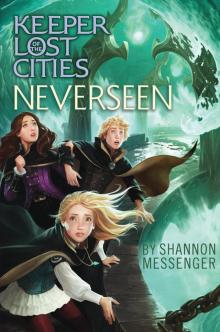 Neverseen
Neverseen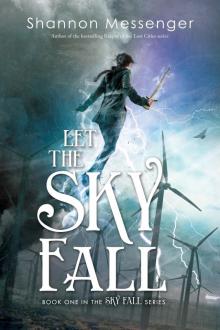 Let the Sky Fall
Let the Sky Fall Lodestar
Lodestar Nightfall
Nightfall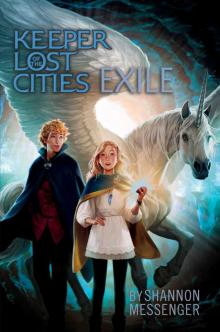 Exile
Exile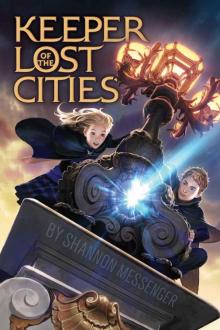 Keeper of the Lost Cities
Keeper of the Lost Cities Let the Wind Rise
Let the Wind Rise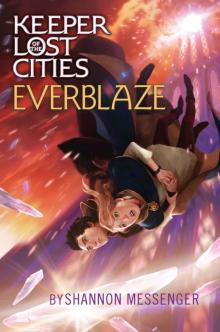 Everblaze
Everblaze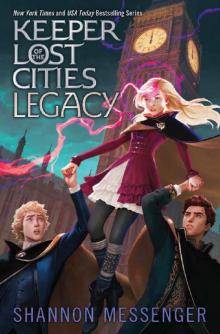 Legacy (Keeper of the Lost Cities Book 8)
Legacy (Keeper of the Lost Cities Book 8) Let the Storm Break
Let the Storm Break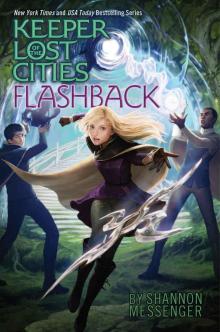 Flashback (Keeper of the Lost Cities Book 7)
Flashback (Keeper of the Lost Cities Book 7)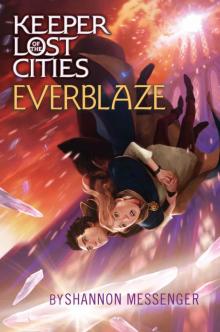 Everblaze (Keeper of the Lost Cities Book 3)
Everblaze (Keeper of the Lost Cities Book 3)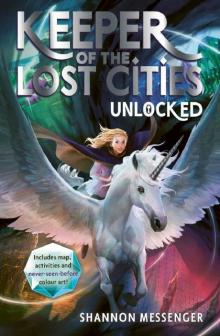 Unlocked 8.5 (Keeper of the Lost Cities)
Unlocked 8.5 (Keeper of the Lost Cities) Flashback
Flashback